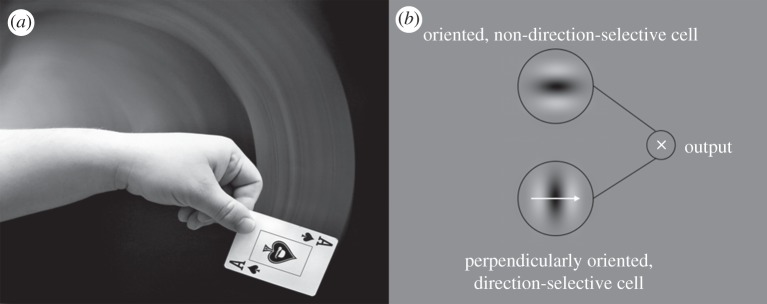Figure 1.

Motion streaks in art and vision. (a) Motion streaks are often used in photography and art to give a strong impression of fast motion within a scene. Photograph by Tod Klassy, sourced from www.flickr.com and reproduced with permission. (b) Geisler's [1] model of how a motion streak might be combined with a motion signal in early cortex to provide a code for motion direction. Specifically, a direction-selective V1 cell (giving the sign of motion direction) might combine its output with that of a cell selective for static orientation, which would respond to the temporally integrated motion streak, giving fine angular resolution and solving the aperture problem [1].
